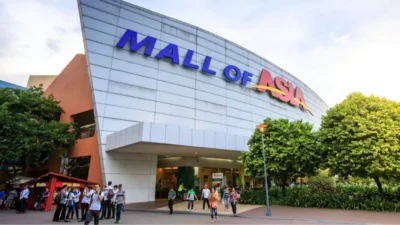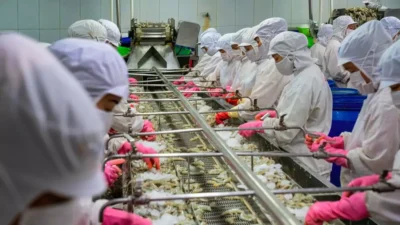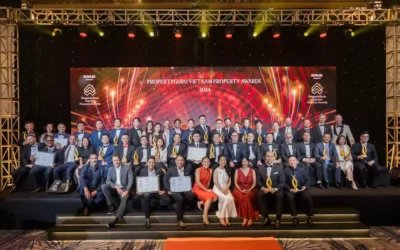Singapore property market still a picture of stability
It’s a tired trope throughout Asia to say Singapore lacks soul. Clean, walkable streets. Efficient traffic. Effective public transport. Well-organized family fun. Innovative bars and restaurants. Shiny modern towers and lush planned parklands. Ugh. Who wants that?
Well, if we’re talking about players in the luxury property market, lots of people.
“Singapore is known as a safe haven in Southeast Asia, with a stable currency and transparent housing regulations,” says Christine Li, senior director and head of research for Cushman & Wakefield Singapore. “Risk involving property development is virtually non-existent for retail investors,” adds Li. After 15 consecutive quarters of price declines—which, experts say, signalled not softer innate demand, rather a wait-and-see attitude with regards to government policies—prices began rising mid-2017 and jumped 9.1 percent by the halfway point this 2018.
Experts are predicting a 10 percent expected value growth in properties in 2018, even amid recently implemented cooling measures last July 5. Concerns about “euphoria” in the market had the government announcing it would raise the Additional Buyer’s Stamp Duty (ABSD) rates and tighten loan-to-value (LTV) limits on residential purchases. The day before the measures kicked in, potential buyers flooded private home showrooms across the city-state hoping to lock in a sale at a better deal. The feeding frenzy resulted in sales jumping 55 percent year-on-year in July, with 1,724 units sold in July versus 654 in June. Developers brought forth new launches, offering 2,239 in July—the highest since March 2013.
Lest that encourage fears of a bubble, it’s worth noting what proportion of the country’s overall housing market we are talking about, says Alex Shlaen, founder of Panache Management, who advises HNWI and UHNWI on property investments and collaborates with luxury real estate projects. Some 80 percent of Singaporeans live in subsidized government-built flats. Of the rest of the population that owns homes built by private developers, only a small number of those—perhaps five percent, Shlaen figures—are high-end. “It’s very far from a bubble,” he states.

Besides, you can count on the government to swoop in and mitigate things. From July, though Singaporeans and Singapore permanent residents (SPR) saw no change in the ABSD on purchasing their first residential properties (zero- and five percent respectively), those buying subsequent properties—foreigners included (except passport-holders of Iceland, Lichtenstein, Norway, Sweden, and the U.S. who all have a special exemption)—saw their ABSD rates jump five percent. That means that foreigners purchasing a residential property worth more than SGD1 million (USD730,000) now pay a 20 percent ABSD on top of a tiered stamp duty that, as of 2018, tops out at four percent.
“You basically have to pay nearly a quarter of the value of your purchase, but it doesn’t go to the value of the property,” Shlaen says, adding that foreign buyers’ resell pool is smaller because other foreigners face the same restrictions and there are fewer visas being issued. It’s also now more difficult for everyone to maximize their loans as a percentage of their property value. All LTV limits have been tightened by five percentage points, with the highest now being 75 percent.
However, a certain slice of buyers is nearly immune to such concerns. “Investors and self-stayers—locals who purchase a residence for their primary home—are competing for the not-so-large pool of high-end and luxury properties,” Shlaen says, adding the luxury condo market is affected by foreigners and permanent residents, particularly HNWI and UHNWI moving their money and possibly selves out of Malaysia and Indonesia because of the political climate and lower valued currencies.
“Singapore is the most undervalued of developed cities,” Shlaen posits. Singapore luxury real estate prices are about half the average Manhattan and London rates of SGD8,227 per square foot—a pretty good deal for buyers already “drawn to Singapore for its lifestyle, the education, pro-business environment, and security,” says Lee Nai Jia, senior director and head of research at Knight Frank. “The offerings of luxury residential projects are more important than market fundamentals, and it must align with the preferences of HNWIs.”
Luxury properties are defined as 2,500 sqf and above in the prime districts 9, 10, 11 (the island’s central commercial core) —and the newly added 1 and 4 (Marina Bay and Sentosa). Good class bungalows, sitting on land no less than 15,000 sqf, are the “pinnacle of the luxury property market,” Shlaen says. As for conservation shophouses, transactions for those hit a five-year record year-on-year in Q1 2018, jumping 280 percent to a total value of nearly SGD488,200,000.

Still, larger developments make bulk of the market—in a small country with highly limited land, that means acquiring space from the government or people who already live there. En bloc sales offer residents of a building above-market price to leave en masse, after which developers take down the property and expand it: once larger units in a lower building become smaller units in a taller building. “Usually developers never go under the limit of zoning restrictions because they want to maximize profits,” Shlaen says. “In general, buildings 20 years and older are prime targets, especially if the location is good. Owners get the feeling it’s time to go en bloc rather than renovating.”
The en bloc market went a bit gangbusters after the government relaxed cooling measures in March 2017. “Buyers treated the fine-tuning of the seller’s stamp duties in 2017 as a signal that the market had bottomed,” says Lee Nai Jia, “prompting more buyers to take advantage of what they assumed were fleetingly low prices.
PENT-UP DEMAND FROM INCOME GROWTH AND UPGRADING NEEDS WILL CONTINUE TO SUPPORT THE MARKET MOVING FORWARD. HOME PURCHASERS LOOKING FOR A SAFE HAVEN WITH APPRECIATION PROSPECTS WILL STILL FIND SINGAPORE ATTRACTIVE
The higher sales encouraged developers to bid for the limited Government Land Sales (GLS) sites aggressively, since most have depleted the land bank. This led to collective sales, which further fuelled demand for homes by owners needing replacements for the ones they had sold.”
Lim Yew Soon, managing director of EL Development Pte Ltd, believes that now, thanks to rising en bloc prices and the quick work of developers toward 2018 in “jumping on the bandwagon of replenishing their land banks… the collective sales have almost reached the end of their cycle… Our company is in the process of acquiring a collective sales site in the Newton area, which we look to redevelop into a high-rise luxury residential development in 2019 if our acquisition is successful.”
A slew of new such homes are set to come online the coming years. Regulations are changing, Shlaen says, allowing for buildings in some neighbourhoods to have higher floors than in previous generations. “In view of current loan curbs and heightened land costs, we expect developers to gear towards smaller unit sizes to keep price quantum affordable,” says Christine Li. “This will also allow them to charge a higher unit price for each unit. Developers would also look to incorporate smart home features to differentiate their launches and attract tech-savvy millennials.”
Other trends to watch out for? Says Lim Yew Soon, “The coming months would be a buyer’s market. Projects in good locations like those near MRT stations and popular schools will continue to do well. On the policy front, the government’s criteria for green buildings and for buildings to be built with higher productivity construction methods get more and more stringent each year, which would reduce the carbon footprints of future developments over time.”

Lee Nai Jia agrees: “New wealth is created due to the advent of disruptive technology, making design vital. More buyers will look at the character or the heritage of the area. Bugis and Tanjong Pagar may be new hotspots—they not only cater to the professionals, but also offer great views and proximity to work.” Not to mention a plethora of the coolest restaurants and bars in the city.
The market is likely to undergo adjustment as it digests the higher ABSD and tighter loan curbs, says Christine Li. “Nonetheless, fundamentals remain sound and unchanged. Pent-up demand from income growth and upgrading needs will continue to support the market moving forward. Home purchasers looking for a safe haven with appreciation prospects will still find Singapore attractive,” she says.
Indeed, even after the mass shopping spree on July 5, developers reported that sales continued despite the implementation of the cooling measures.
“It’s like you’re sitting in your car, your handbrake is on and your foot is also on the brake pedal, and the car is still moving,” Shlaen says. “What does that say? It’s a very healthy market and people feel very safe to park their money in a triple-A investment.”
Certainly, such a sense of stability is good for the soul, no?
This article originally appeared in Issue No. 150 of PropertyGuru Property Report Magazine
Recommended
Inside Asia’s luxury resort residences that are redefining high-end living
Asia’s resort residence market is witnessing a shift as investors eye larger, multifunctional units
How joining BRICS could give Thailand and Malaysia a new economic edge
Thailand and Malaysia are eyeing membership in the bloc of emerging nations
How Modi’s real estate reforms are transforming India’s housing market – and what’s next
A coalition led by the strongman prime minister Narendra Modi is looking to consolidate gains in the property market
Why Japan’s new interest rates might spark a transformation in Niseko’s property market
A new era for Niseko’s wintry property market dawns with the sunset of Japan’s negative rates regime








